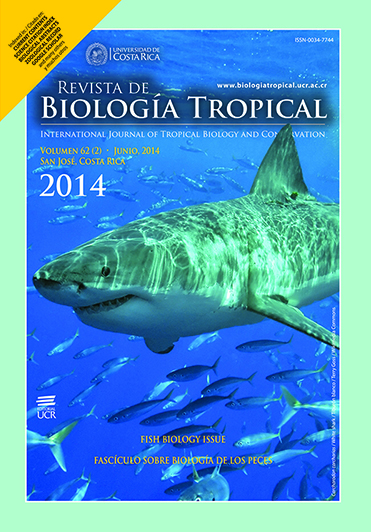Abstract
Gobiidae is the most specious fish family in the world with almost 2 000 species, however only 11% of them have been described for their larval stages. The entire life cycle information is essential to understand the biology and ecology of this important fish group. Previous studies on zooplankton samples from Ensenada de La Paz, México, have shown the presence of several Gobiidae larvae and juveniles which were identified as Evermania zosterura. The main objective of this work was to describe the larval stages of this species, widely distributed in the Eastern tropical Pacific. The development of E. zosterura larvae was described based on 66 specimens. A total of 53 specimens were used to describe morphometrics and pigmentation patterns, while 13 specimens were cleared and stained, to obtain meristic characteristics. Cleared specimens had 30 to 31 total vertebrae; dorsal-fin elements: IV; I, 13-14, anal-fin elements: I, 13-14, and most had pterygiophore formula 4-111100. The combination of these characteristics confirmed these specimens as E. zosterura. The pigment pattern is similar throughout ontogeny. Larvae are characterized by having three to five dendritic melanophores along the post-anal ventral margin, four to nine smaller melanophores along the ventral margin between the isthmus and anus, and one on the midpoint of the dorsal margin of the tail. There is one small pigment spot on the angle of the jaw, and other on the tip of lower lip. There is an elongated internal pigment under the notochord, between the head and gas bladder. Notochord flexion starts near 3.5mm BL and ends at 4.6mm BL; transformation to the juvenile stage is at about 13.6mm BL. Our conclusion is that the most useful characters to distinguish this species early-larval stages from those of similar species in the area, are the number of myomeres, the large melanophores (approximately uniformly in size) on the post anal ventral margin, and the elongate internal pigment under the notochord, anterior to the gas bladder.Comments

This work is licensed under a Creative Commons Attribution 4.0 International License.
Copyright (c) 2014 Revista de Biología Tropical
Downloads
Download data is not yet available.






